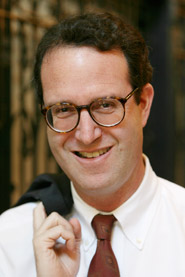Blair Kamin shares his thoughts on what agents should know about architecture.
By Stephanie Sims
People often forget that real estate and architecture are almost synonymous when it comes to homeowners looking for a home – they have to like where the home is located, what their new home looks like and its interior or exterior features…all of which have to do with architecture, according to Blair Kamin, Chicago Tribune’s resident architecture critic since 1992. Architecture doesn’t just apply to each individual building, but also to entire neighborhoods, according to the Pulitzer Prize winner for criticism and notable author of two books (Why Architecture Matters: Lessons From Chicago and Terror and Wonder: Architecture in a Tumultuous Age).
It’s true what they say: location, location, location – which has more to do with architecture than agents might think.
“Curb appeal and a sense of image in residential architecture has always had an enormous role when it comes to selling real estate,” Kamin says. “The key is to know the market and the neighborhood. People buy homes for the neighborhoods, too, not just individual buildings.”
In these cases, architecture can be a useful tool when trying to close a deal. And agents don’t have to have an extensive knowledge of structural engineering – Kamin says he wishes agents would just know more about a home, building or neighborhood when trying to make a sale.
“I don’t think anyone expects agents to be docents, but a basic knowledge of the fundamentals of architecture is good,” he says. “It helps when an agent can say a house is an Arts and Crafts house and the detailing reflects concern for natural materials, which has brought the home a long-lasting quality that’s stood the test of time, and things to that effect. Also, it wouldn’t hurt if more agents took the Chicago architecture boat tour.”
Some of the information agents can learn from the boat tour might include present and forecasted architecture trends, including the shift towards modern residential buildings versus traditional buildings. Tastes and trends are shifting away from traditionally designed masonry towers to buildings sheathed in glass, according to Kamin.
“Ten years ago due to financial success, many developers were imitating the ‘mansion in the sky’ prototype – steel-framed buildings clad in pre-cast concrete and other traditional details,” he says. “These buildings have not disappeared – there are two major projects by Lucien LaGrange under construction that will be completed soon – we’ve just seen a shift towards ‘glass giants,’ including Trump Tower, the Legacy at Millennium Park, and other high rises clad in skins of glass.”
Besides the overall look of tall, glass buildings, another factor for this modern trend is cost. “In some respects, these buildings are more economical for developers,” he says. “Glass is less expensive and you don’t have to be as detailed. Building a good traditional building costs a lot of money if you’re really going to spend on quality limestone and the like.”
While Kamin is hesitant to name just one architect he’d like to design his home if he could (“that’s a dangerous question,” he says), he does name Jeannie Gang, Larry Booth, Stuart Cohen and David Adler as architects whose work he greatly admires. In addition, there are “so many great residential buildings that you could write a book about” – maybe Kamin’s next book will be about the “elegant steel and glass” 860 to 880 N. Lake Shore Drive high rises and the buildings on East Lake Shore Drive by Ben Marshall. “As a whole wall, that cliff of buildings along N. Lake Shore Drive is one of the greatest achievements in chic residential design,” he says. “Those buildings are eclectic and traditional. They are prime examples of great residential design; they look wonderful individually and as a group.”
On the other end of the scale, he says, a single-family home he greatly admires is a Farnsworth house designed by Ludwig Mies van der Rohe that sits along the Fox River. Kamin teaches a class at North Central College, and every year he takes his students on a field trip to visit this house. “Students are always floored by that house. It almost quiets them, and they fall into a religious trance,” he says. “They stare out glass windows at a sugar tree, with the river beyond. The look and effect that house has on people is just wonderful.”
“That house shows that there’s a power of architecture. It’s where we live, it’s where we sleep, it’s where we raise our families,” he adds. “A house isn’t just a roof over our heads, it’s our little sanctuary. Each home and building should lift the spirits of the occupants and neighborhood.”
Blair Kamin is the architecture critic of the Chicago Tribune, a post he has held since 1992. He is a winner of the Pulitzer Prize for Criticism and continues a tradition of accessible but authoritative criticism begun by the Tribune’s first modern-day architecture critic, Pulitzer Prize-winner Paul Gapp. Kamin also serves as a contributing editor of Architectural Record magazine and was part of a team of editors, writers, photographers and critics for the magazine, which in 2003 won the National Magazine Award for General Excellence.
